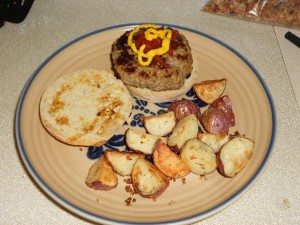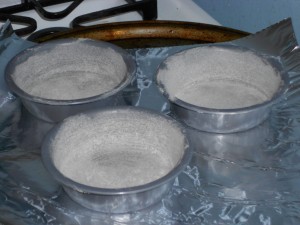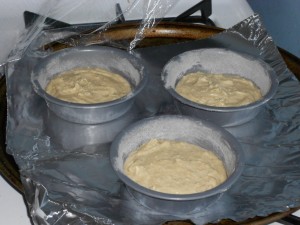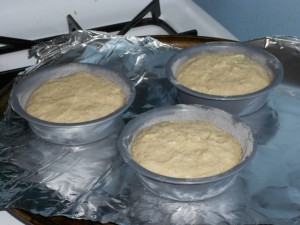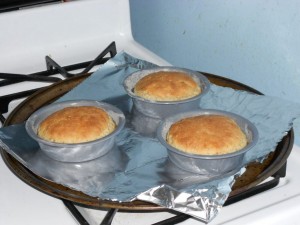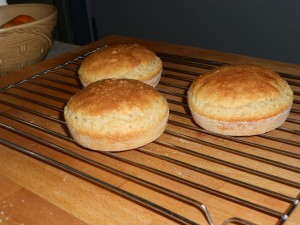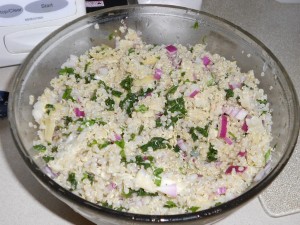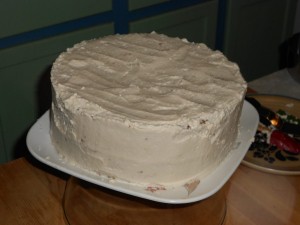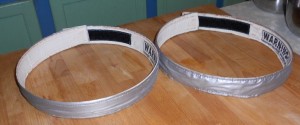GF Applesauce Cake
adapted from:
http://www.healthyseasonalrecipes.com/blog-table-of-contents/699-gluten-free-applesauce-snack-cake.html
and
http://glutenfreeislife.wordpress.com/2008/10/01/applesauce-cake-stress/
First made on September 26, 2012
Makes: 15 servings.
Active Time: 20-30 minutes.
Total Time: 1 hour 30 minutes.
Ingredients
- 2 eggs
- Zest from 1 orange or lemon
- 2 cups unsweetened applesauce, preferably homemade
- 1/3 cup honey
- 1/3 cup canola oil
- 2 cups brown rice flour blend
- 1 teaspoon guar gum
- 1-1/2 teaspoon baking soda
- 1/2 teaspoon salt
- 3/4 teaspoon baking powder
- 1/2 teaspoon ground cinnamon
- 1/4 teaspoon ground allspice
- 1/4 teaspoon ground nutmeg
- 1/4 teaspoon ground ginger
- 1/4 teaspoon ground cloves
- 1/2 cup raisins (optional)
- 1/2 cup chopped walnuts (optional)
Directions
- Preheat oven to 350 degrees F. Grease a large bundt or tube pan and sprinkle with a dusting of rice flour.
- Puree eggs, zest, applesauce, honey and oil in a blender or food processor.
- Whisk flour, guar gum, baking powder, baking soda, salt, and spices in a large bowl.
- Add the wet ingredients to the dry ingredients. Stir gently until combined. Add raisins and walnuts. Stir to combine.
- Spread batter into the prepared pan and smooth to make sure there are no air pockets.
- Transfer to the oven. Bake until golden brown and the cake springs back when lightly touched, 45 to 50 minutes.
- Let cool in pan 10 minutes before turning out onto a cooling rack.
Note
This cake turned out a bit “denser” than I would like. Next time I will try to make something more like my Carrot Cake—moister, sweeter, spicier. Still, this was definitely edible.



